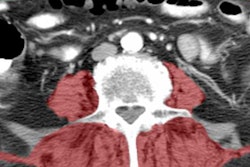A research project funded by NASA that is looking for ways to reduce bone loss in astronauts may also identify methods to improve the bone health of cancer patients undergoing radiation therapy treatment.
Scientists affiliated with the National Space Biomedical Research Institute (NSBRI) in Houston have identified that activation of bone-reducing cells called osteoclasts occurs within days of radiation exposure. Under normal conditions, osteoclasts work with bone-building cells called osteoblasts to maintain bone health. The discovery was announced by project leader Dr. Ted Bateman, associate professor of bioengineering and director of the Osteoporosis Biomechanics Laboratory at Clemson University in Clemson, SC.
Mice exposed to 0.5-1 Gy of radiation, the level of exposure astronauts would experience during a space mission to Mars, had their osteoclasts "turned on" several days later. The osteoclasts appeared to have a different shape and had increased in quantity, according to Jeff Willey, Ph.D., a postdoctoral fellow at Clemson who is leading an NSBRI-funded project investigating the cellular mechanisms involved in radiation-induced bone loss.
The discovery by project researchers at Clemson University and Loma Linda University in Loma Linda, CA, challenges conventional thought, according to Bateman. He suggested that existing treatments such as bisphosphonates may be able to prevent the early bone loss.
Cancer patients receiving radiation therapy to treat pelvic tumors are exposed to up to 25 Gy of radiation to the hip during treatment. They may experience an increase in hip fracture rates from 65% to 200% following radiation therapy treatments.
Bateman and colleagues believe that early introduction of bisphosphonates and other forms of treatment could help deter hip fractures. Several clinical trials are under way with cancer patients to determine if the percentage of bone loss from the experiments with mice corresponds with the bone loss in humans, Bateman reported. He said that preliminary results of the clinical trials are showing rapid declines in bone mass and strength.
Related Reading
Osteonecrosis of the jaw: A serious byproduct of bisphosphonates usage, October 3, 2007
Copyright © 2009 AuntMinnie.com



















